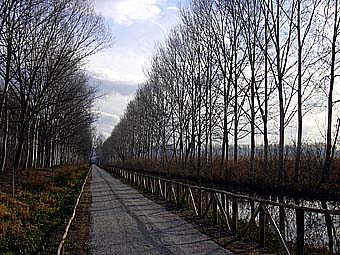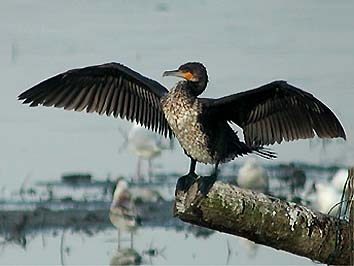
This trail is particularly suitable for birdwatchers and nature enthusiasts.
The Fucecchio Marshes Nature Reserve, established in 1996 by the Pistoia Provincial Authorities, covers an area of about 200 hectares and is divided into two sectors, "Le Morette" and "La Monaca-Righetti".
The “Righetti” area, property of the Consortium for Reclamation of Fucecchio Marshes, has several structures for visiting the area, including two hides; access to the observation hides is regulated and the area can only be visited by taking a guided tour.
For information and guided tours
Centro di Ricerca, Documentazione e Promozione del Padule di Fucecchio (Centre for Research, Documentation and Promotion of the Fucecchio Marshes):
tel. and fax 0573/84540
e-mail fucecchio@zoneumidetoscane.it
The marshes are an ideal scenario for appreciating one of the most extraordinary phenomena in the animal kingdom: bird migration. At every change of season, these places have always been marked by flocks of migratory birds and their calls.
In the Mediterranean basin, one of the most important functions of the wetlands which have escaped reclamation is their role as fundamental stop-over sites during migration and over-wintering grounds for many species of water birds that breed in and around the central and northern part of the Euro-Asian continent.
One managerial priority in the Nature Reserve its therefore the double aim of creating a favourable habitat for almost all the species of fresh water birds that transit along the Italian peninsular and at the same time offering our visitors the opportunity to observe them without causing disturbance.
The open water areas are frequented by ducks, coots, grebes and cormorants; the muddy areas are home to large groups of waders (Snipe, Lapwings, Curlews, Godwits, etc.) whilst the reed beds are the reign of the Rales and Crakes (the Rallidae), small passerines and the rare Bittern (Botaurus stellaris).
Among the most frequent over-wintering species that can be seen in this area are a small dabbling duck, the Teal (Anas crecca), and a well known wader, the Snipe (Gallinago gallinago).
Among the nesting species, the Mallard (Anas platyrhynchos) and two rails, the Coot (Fulica atra) and the Moorhen (Gallinula chloropus) are common and easily seen.

The Cormorant
Until about ten years ago, Cormorants could sometimes be observed in inland Tuscany.
Today the species regularly over-winters along the River Arno Basin and over a hundred individuals daily use the Fucecchio Marshes Nature Reserve as their feeding ground.
Over the last few years, the species has begun to nest again in Peninsular Italy and since 2009 has been breeding at Fucecchio Marshes ("Righetti" area).



